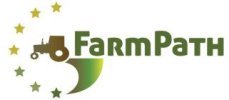New forms of governance
The ongoing transitions of the modern farming resulted into its multifunctional shape. The function of farming is considered not only to produce food or energy but also to provide public goods (e.g. through landscape stewardship) or to contribute to the quality of life (e.g. through social care or inclusion of rural population into development activities). Such multifunctional characteristics of agriculture embracing economic, environmental and social functions of farming not only echo three pillars of sustainability (economic, environmental and social) but also necessitate new forms of governance to handle with the transition from productivist model of farming toward multifunctional and sustainable model of agriculture. It is because farming is not anymore isolated from the processes in rural territories since rural development today is not sector (agriculture) based but territory based (with the participation of many actors and functions and sectors operating in the territory). Being aware of these facts EU already in the early 1990s introduced its initiative LEADER to stimulate and to help rural actors (incl. farmers) to think about the longer-term potential of the territory they operate (Commission notice to member states of 14 April 2000 laying down guidelines for the Community initiative for rural development /Leader+/ 2000). Through local action groups (LAGs) formed as the partnership of public and private partners in rural territories the rural development policy encouraged also the farmers to participate in the implementation of integrated (multifunctional) and innovative strategies for sustainable rural development. The farmers represented in local action groups can influence the development of the territories they operate. Because LEADER was always constructed as experimental laboratory of the new ways how to develop rural territories, it was also conceived to be the new form of governance through which rural actors (incl. farmers) can influence the processes in the territory they live and operate. The hybrid of the structure of vertical organizations governed from the “remote centre” and the network of horizontal relations of close actors represented by LAGs who govern the development of the locality they operate is contemporary way of governance of rural territories. In this way the farmers operating in the locality can influence the national policy (though the organizations they participate) but also can in cooperation with other actors govern the development of the territory they operate in the everyday activities. LEADER was conceived as the laboratory of rural development to support new approaches to integrated sustainable development. The term laboratory emphasizes its experimental nature. That is why this cluster will focus not solely on LEADER itself but will focus to look how the experimental ways of rural development governance emerge outside LEADER schemes – how also the farmers operating outside LEADER schemes can influence the development of the areas they operated and in such way to contribute to their sustainability. Such approach will demonstrate the truly experimental character of LEADER as the laboratory emitting the new principles of governance and also learning from the new ways of governance originating outside the EU schemes (documented through this research).
For more information on this please click Here

Image shows new organic orchards operated by the Czech initiative (small spots in right corner of the photo under the forest and in general landscape management) and new building in the community due to construction of biological (plant-root-based waste water treatment plant) (Photo courtesy of Michal Lostak)




